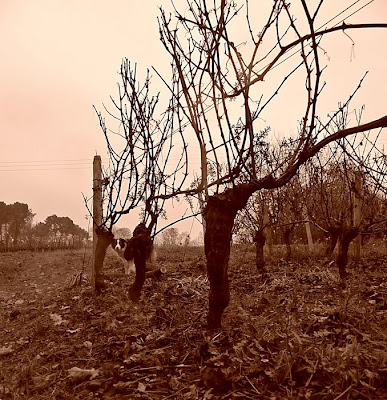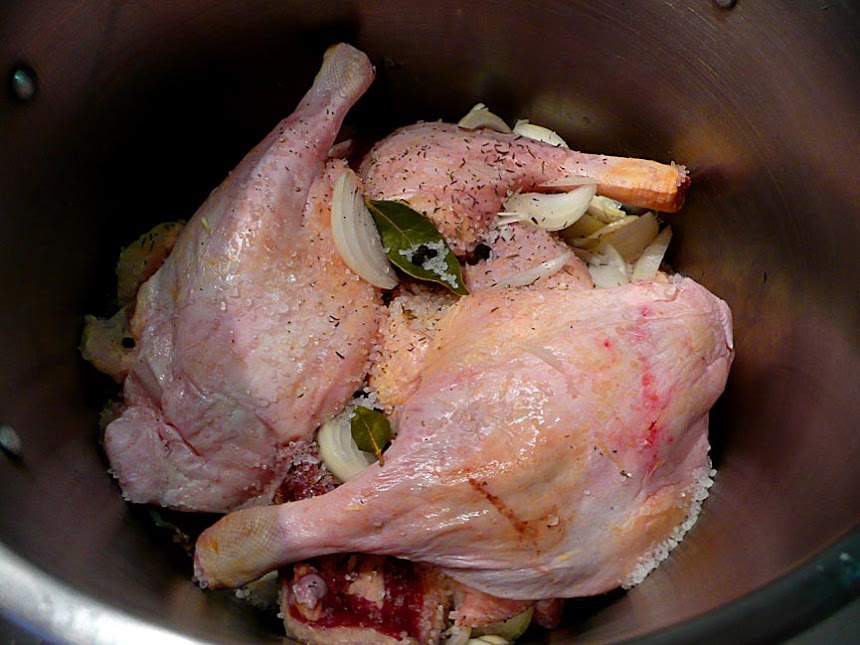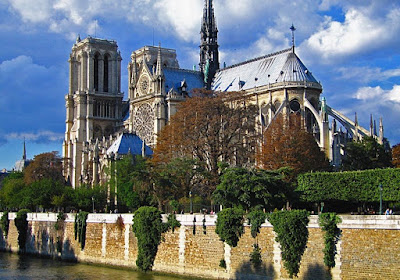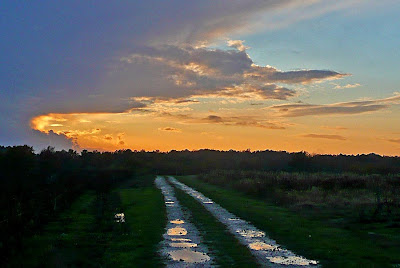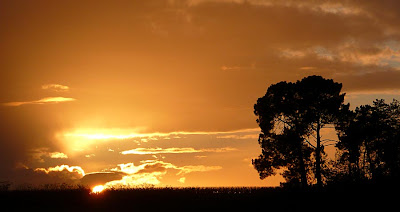There are 16 vowels in the French language as it is spoken in France. There are 14 if you eliminate two vowels that some specialists think might be on the way out.
That might surprise you, because we all know there are just five vowels in our alphabet. A, E, I, O, and U. And sometimes Y.
But those are written vowels. When I say there are 16 vowels, I'm talking about vowel
sounds in the language.
You need to be able to pronounce them and tell them all apart in order to become fluent in speaking and understanding French. If you are learning French, I think it helps to be aware of the fact that there are 16 (or at least 14) distinct vowels to learn.
 These are the accents commonly used in French.
These are the accents commonly used in French.One appears in only one word in the language,
but it's a very common word. Do you know it?
Beware: spoiler in the comments
To explain the vowel sounds, it's probably easiest to start with the French nasal vowels. There are four of those, and they are a type of vowel that we don't exactly have in English. The nasal A is the vowel in
dans or
dent, which are pronounced identically. The nasal I is the sound in
fin,
pain, or
faim, which all rhyme with each other. The nasal O is the sound in
bon. The nasal U is the sound in
un.
The nasal U is one of the two vowel sounds that might be disappearing from the language. Nasal U is merging with nasal I, so that the word
défunt, for example, sounds exactly like the expression
des fins.
Un sounds like the exclamation
hein. So you could argue that now there are just three nasal vowels in French: nasal A, nasal I, and nasal O.
There is no nasal E, as such. When a written E vowel is nasalized, it has either of two other sounds. In words like
dent or
en, it is pronounced as as nasal A. The words
en and
an are pronounced identically. In words like
moyen or
bien, the nasalized E is pronounced as a nasal I.
Bien rhymes with
vin.
The vowels that are not nasalized are called oral vowels. There are 12 of them. Or maybe just 11 nowadays.
In traditional French, there are two A vowels. The first and most common is the A in the article
la, or the words
chat,
foie, or
bois. The second is the A in words where A is followed by an S, for example:
gras, or
pas. Or words where the A has a circumflex accent on it:
pâté or
gâteau. A lot of younger speakers no longer pronounce the A circumflex (â) differently from the plain unaccented A. So you don't have to worry about it much. The A with a grave accent (à) in
là or
voilà is not pronounced differently from A with no accent on it at all.
At first, E seems a little more complicated in French, but it kind of takes care of itself. There's the "closed E" which is often represented by E with an acute accent (é), as in
été. The "open E" is often an E with a grave accent (è) but not always. Another spelling is AI, as in
lait or
fait. The E in words or syllables that end with a consonant sound is an open E:
père,
belle,
faire, or
peine. An E with a circumflex accent (ê) is generally pronounced the same way —
fête or
rêve, for example.
The third pronunciation of E in French is called the "mute E". It never has an accent on it. It's the E in the first two syllables of the word
revenir. It's pronounced like "uh" in English. The mute E is often dropped completely. When it is the last letter of a word like
belle or
faire, for example, it isn't pronounced, at least not in northern France. Even in words like
graineterie, the E's on either side of the T can be dropped, so the word is pronounced [grèn-tri]. (With two French R's, of course.) The mute E is the E of
je,
me,
te,
se,
le, and
de.
So there you have one or even two A vowel pronunciations, and three E vowel pronunciations. We are up to five oral vowels if you count them all.
The simplest vowel is I. It only has one pronunciation as an oral vowel, and that's what we would represent as "ee" in English (though more tense). Unlike English, French in France has no distinction between a long I and a short I, as in English pairs like
heat and
hit. In French, an English expression like "hit parade" is pronounced as if it were ['eat pah-rahd]. That's it (or
eet) for the oral I vowel. It has just one pronunciation. Of course there is also the a nasal I vowel as in
fin or the I's combined with other written vowels as in
faire or
Loire that change their pronunciation — but that's another story.
There are two pronunciations for O in French. It's a lot like E in that way, except there is no mute O. There's the closed O in words like
mot or
beau. You have to pucker your lips. And there is the open O in words like
bonne or
pomme, sans pucker. The combination AU is usually pronounced with a closed O, so that
paume (pucker) is different from
pomme (no pucker).
The U vowel also has two pronunciations. One is obvious to English speakers. It's the round sound of
bout or
tout or
sous that we would write as "oo" in English (only more tense and with that pucker). The other is the nearly unpronounceable U sound that we don't have in English. It's the sound of
bu or
tu or
su. I won't go into the mechanics of how you make it. The main point here is that -ou- is pronounced one way, and -u- is pronounced a different way. It's important, because, for example, your
cou is your neck but your
cul (the L is silent) is your derriere. Good luck pronouncing or even understanding
dessous and
dessus.
So add two O's and two U's to the single I, plus the two A's and three E's, and we are up to 10 oral vowels.
The last two oral vowels in French are also sounds that we don't really have in English. They are spelled EU. Or sometimes ŒU, as in
œuf or
cœur. Like E and O, they have closed and open forms. The closed form is the vowel of
jeu, peu,
feu, or œufs — again, it's pronounced with the lips puckered. The open form is usually in words that end in a consonant sound like
jeune,
peur,
fleuve, or
œuf. It's pronounced with the mouth open wider, with no pucker.
For the difference between closed and open vowels, think about word pairs like
mes and
même for E.
Peau and
pomme for O. The same principle applies to
jeu and
jeune. (
Queue rhymes with
jeu and
peu.)
There, that's 12 oral vowels, or 11 if you discount the "old" A of
pas or
pâte. Add the three or four nasal vowels, and you've got at least 14, if not 16, distinct French vowel sounds.
Languages like Italian and Spanish have just five spoken vowels. French has many more. I couldn't even tell you how many English has. I never had to learn them, except from my mother. But I do have trouble distinguishing the English words
pin and
pen when I speak.
 Here's a list of the cheeses we bought and sampled. In parentheses are the names of the provinces the cheeses come from and the milk used to make them. All are French except the Peccorino — two of them, in fact — which C & J brought from Italy, and the Emmentaler from Switzerland. We still have quite a few pieces of different ones of these in the refrigerator.
Here's a list of the cheeses we bought and sampled. In parentheses are the names of the provinces the cheeses come from and the milk used to make them. All are French except the Peccorino — two of them, in fact — which C & J brought from Italy, and the Emmentaler from Switzerland. We still have quite a few pieces of different ones of these in the refrigerator. The flavor of Époisses is strong but clean and not overpowering. The ones I've had have never developed that ammonia taste you sometimes get from the rind of very ripe Bries and Camemberts. The Époisses rind is orange-colored and perfectly edible. The cheese itself is soft and kind of sticky.
The flavor of Époisses is strong but clean and not overpowering. The ones I've had have never developed that ammonia taste you sometimes get from the rind of very ripe Bries and Camemberts. The Époisses rind is orange-colored and perfectly edible. The cheese itself is soft and kind of sticky.

















